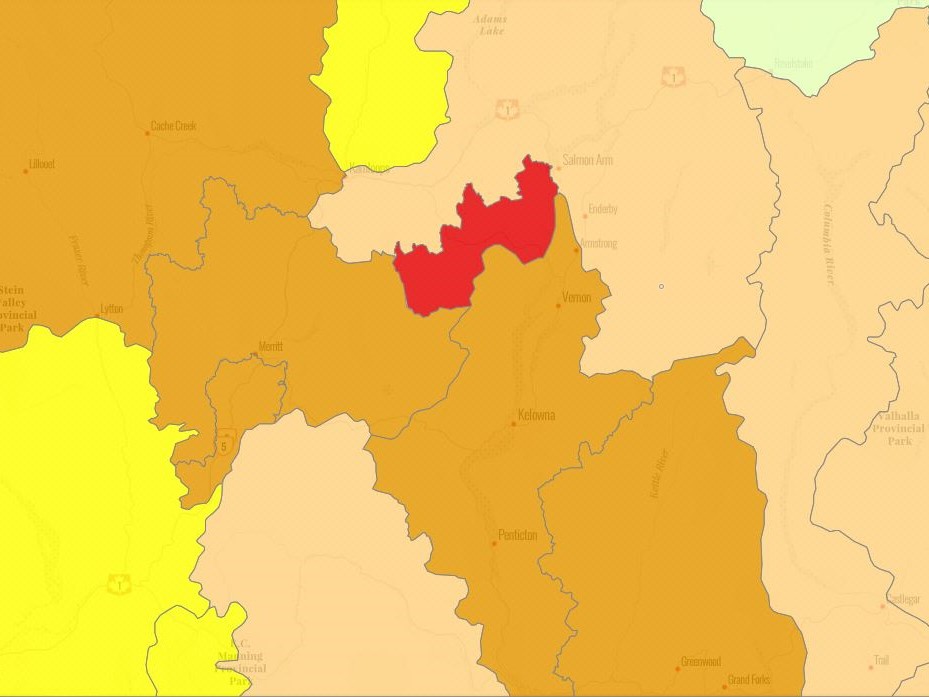Parts of B.C’s Interior are seeing increased drought conditions following three weeks of hot weather.

On Friday, the Ministry of Forests and Lands announced that very low spring rainfall, exacerbated by extreme heat in June and early July, is causing water scarcity and low flows.
Regions now facing drought and water-scarcity conditions include the Okanagan, Shuswap, Thompson-Nicola and Cariboo.
The province ranks drought levels on a 0 to 5 scale, with 5 being the worst.
Currently, the entire Okanagan is at Level 3, as are the Nicola, Kettle and Middle Fraser regions. Notably, the Salmon River watershed, which drains into Shuswap lake, is at Level 4.
On June 23, the Okanagan was listed at Level 1, while the Nicola and Salmon River watershed were at Level 2.
“In this area, significant, adverse impacts on fish are very likely, and maximum water conservation for all water users and licensees is being urged,” said the ministry.

Get daily National news
“Many other areas in the Central and Southern Interior are under Drought Level 2 or Drought Level 1,” said the ministry.
“Conserving water resources is also important in these areas, to reduce the risk of adverse impacts to water users or the environment.”

To help conserve water, the ministry says these tips can help:
At home
- Limit outdoor watering
- Do not water during the heat of the day or when it is windy
- Consider planting drought-tolerant vegetation
- Take shorter showers
- Do not leave taps running
- Install water-efficient showerheads, taps and toilets
On the farm
- Implement an irrigation-scheduling program using real-time weather data
- Schedule irrigation to match crop needs and soil storage capacity
- Improve water system efficiencies and check for leaks
- Focus on high-value crops and livestock
Industry
- Reduce non-essential water use
- Recycle water used in industrial operations
- Use water-efficient methods and equipment

“Water conservation is everyone’s responsibility,” said the ministry.
“Residential, agricultural and industrial water users in areas affected by drought should observe all water conservation bylaws, watering restrictions and advice from their local government, irrigation district or water utility.
For more about drought information in B.C., visit this website.








Comments